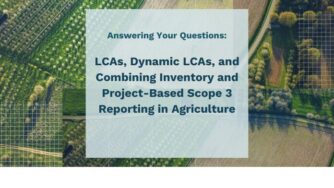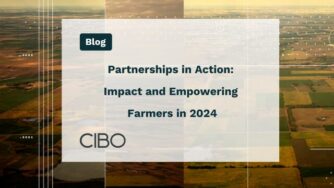World Chardonnay Day is an international initiative to celebrate the virtues of the Chardonnay grape and the many variations of still and sparkling wines made from this grape variety worldwide. World Chardonnay Day not only promotes and celebrates Chardonnay but also leads all of us to educate, recognize, honor, inform and share insights and observations on the growing, production, and enjoyment of this noble grape along with the wines that are made from it!
At CIBO, we believe all agriculture products should be paying attention to how to remain climate-resilient in the face of climate change. Wines and Chardonnay are an essential part of everyday life across the globe. This year, we hope to bring the importance of enjoying the wine and focusing on how to make it sustainable for generations to come.
How Grapes Adapt to Climate Change
According to the study “Evaluating Strategies for Adaptation to Climate Change in Grapevine Production,” published in the Frontiers of Science, maintaining grapevine production will require adaptation to climate change. While rigorous evaluations of adaptation strategies provide decision-makers with valuable insights, published ones often overlook significant constraints, ignore local adaptive capacity, and suffer from the compartmentalization of disciplines and scales.
Climate change adaptation is a key to the future of agriculture, a particularly vulnerable economic sector that depends heavily on weather and climatic conditions. Climate change adaptation can broadly be defined as “the set of actions and processes that societies must take to limit the negative impacts of the changes and maximize their beneficial effect” (Carter, 1996).
In the case of grape growing, the potential adaptation levers are numerous, encompassing both the temporality of technical operations along the production chain—from plantation to annual crop management and winemaking, and their spatial variations due to the existing diversity of cropping systems and the close link between localization and technical adaptation (Viguie et al., 2014).
How Building a Climate-Resilient Food System will help Chardonnay
Building in regenerative agriculture practices will help growing organizations scale resilient climate practices. By choosing options that best fit their operation, growers can become economically and environmentally aligned.
For many growers, regenerative agriculture is an additive process that builds in tactics to help them sustain the soil for years to come. Here are four ways regenerative agriculture can help reduce the impact of climate change on winery operations.
- Protects Yields: Regenerative ag leads to healthier soils that can produce higher yields and ensure yields in extreme conditions.
- Build Healthier Soils: Cover cropping and no-till drawdown and keep carbon in the soil and out of the air, slowing the threat of climate change.
- Protects Water: Healthy soils use water more efficiently and protect waterways from run-off.
- Supports Pollinators: Fewer chemicals and greater biodiversity protect and provide habitat for pollinators vital to producing many crops.
If you’re looking for ways to incorporate regenerative agriculture into your growing operations, learn more on our guided learning pathway Regenerative Ag Practices 101.



